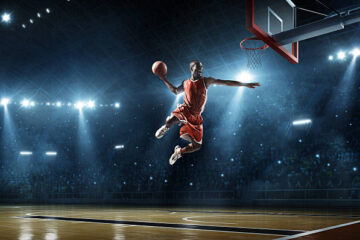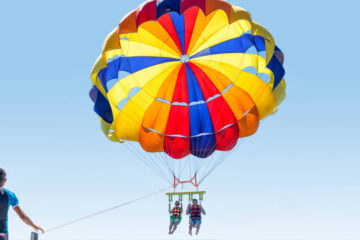Top 10 Tips For Bass Fishing In The Spring

by Steve Pease
I see the new lures, and the advertising for new equipment, and I need to get some. Looking at all the new lures and fishing equipment, I have to get it. Even though I have several things purchased last year I have never used yet. If you are a Bass fisherman, you know exactly what I mean.
Early season Bassin can be the best time of the year to catch big bass. They have eaten little through the winter because cold water slows their metabolism and now that the water is warming; they are getting hungry and ready to eat.
The biggest Bass I have caught was on an opening day of the season, in about 6 feet of water, near flooded timber. I was using an original black and gold Rapala twitching it on the surface near the trees. I cast it and let it sit near a tree. I saw the wake coming through the water from about 10 feet away. She hit with so much force her entire body came out of the water. Six pounds 4 ounces. It was awesome.
Getting ready to spawn.
1. Many baits work well in the early season because most of the Bass will stay in the shallows for most of the day where the water is warmer. The fish are looking for a place to lay eggs, or have laid eggs and are protecting them. Even after the spawn, when they are protecting the fry, they will be close to their chosen bed. They can be aggressive, or they may not move even if you hit them with the lure, I have seen both reactions. It can be very frustrating when you see the fish and put the lure in front of their face, and they don’t move.
2. The warmest water will be at the north end of the lake in the spring. The sun is still low in the sky to the south, so the north end will get sun much longer during the day. The sun hitting the lake can warm the temp of the water 5 degrees or more in one day. The bass will go to the shallower warmer water because there is more activity from small fish, crayfish and other food sources. Dark bottom areas on the North end of the lake will warm the fastest, because the black bottom holds the heat better than light colored sandy bottoms.
Where to fish.
3. Do not pass by the sandy bottom flats though. There is a lake I regularly fish, that I love to get there before the sun comes up. There is an area on the North-east side of the lake, about 10 acres of sand flat, about 3 to 6 ft deep. I can’t even count the number of bass that I have caught in this area, fan casting a medium diving crankbait and bouncing it along the sandy bottom. The bass love to cruise the sand flats at sunrise, and they are aggressive, and love to bite.
4. Keep quiet. When you are fishing in shallow water, the noise you make travels a long way through the water, and is amplified considerably over what you hear. I have a great radio with a cd player in my boat, I never have it on when I’m fishing. Can you imagine what that sounds like to the fish.
I recommend you even shut off your motor before you get to your spot and use the trolling motor to get close. I think it’s even better if you set the trolling motor on a very low speed and leave it going while in the shallows, so it makes a low constant sound. If you have it on a high speed and you keep hitting it on and off, it can also spook the fish.
Set things down quietly and move around as little as you can when you’re actually in the shallows, especially if you are in an aluminum boat. Just think about any noise you make is amplified through your hull and through the water.
Structure
5. When you’re in the shallows, look for any structure you can see. A weed line forming, any trees in the water, any boat lifts, rocks, etc. Never pass a dock without fishing it from the front to the shore. If you have ever fished from a dock, you know that small sunfish and crappies and other small fish like to hang out around docks. What do bass like to eat? Smaller fish. The Bass know that the food will be there, so they go there to eat.
Any weeds like reeds that stick above the water and grow on the sand flats can be unbelievable at the right time. There is a lake that my brother and I have fished extensively. There is a reed bed in about 5 feet of water on a sand flat that we had fished before and caught fish.
One day in a light rain in early June, we went to this reed bed and over the course of the next 5 hours caught over 80 Bass in the 2 to 4 pound range, not huge but nice size and fun to catch in Minnesota. We caught them all on bright purple weightless Texas rigged plastic worms. It was the most phenomenal single fishing experience I have ever had. We finally quit because we were tired of catching fish. We have caught many more Bass from those reed beds, but never anything like that day.
Longer casts
6. Cast longer. When in shallow water, and especially if it is clear, you want to cast longer so you don’t spook the fish. If you’re fishing on a sand flat, you can switch to a rod with a lighter line, because you don’t have to worry about the fish getting hung up in weeds. The lighter line will let you cast farther and use the smaller baits if you need to.
7. Wear polarized sunglasses. It will amaze you at how much better you can see through the glare on the surface of the water and see the fish if the water is relatively clear. Seeing fish always gets you excited. I have never tried one of the underwater cameras, but that is why they have gotten popular. It motivates you if you see the fish. The cameras look cool, but I think I would spend more time watching the screen than fishing, so it wouldn’t help me catch more fish.
Use your full arsenal.
8. Try all your lures. Sometimes any lure will work in the spring. Start with the lures that can cover the most water the fastest. If you’re fishing a sand flat that is open, start with a crankbait. If you’re fishing a weedline or other structure and the water is choppy, start with a spinnerbait or a chatterbait. If you get out when the sun is coming up, definitely try a topwater that you can cast near cover and entice them to bite. If the faster fishing lures aren’t working, switch to jigs and or worms. Every obvious structure. I start with a spinnerbait and then go to a tube jig or plastic worm before moving on. If you find a lure, that’s working, use it until it isn’t. The fish can change what they want several times during the same day, so don’t get hung up on one lure. Try different lures and you will catch Bass.
9. Go to smaller lures. If you just can’t find anything that is working. Go to a smaller bait and something that can be fished slower. A smaller crappie size spinnerbait or smaller tube jig, or 4 inch plastic worms may just be the ticket for finicky Bedding or post spawn Bass.
Go fishing
10. Go Bass fishing. If you live in Minnesota like me, and you are a Bass fisherman, you are part of a smaller group of fisherman. Most fisherman in Minnesota fish for Walleye and panfish. There is nothing wrong with Walleye or panfish or Pike. I fish for panfish whenever I want some excellent fish to eat, there is nothing better than crappie and sunfish fillets lightly breaded and fried in butter.
One thing you may not know if you don’t fish for Bass is that you catch a lot of Pike when bass fishing. I catch my fair share of Walleyes while Bass fishing. Fishing weedlines on edges of deeper water is a good place to catch nice eating size Walleyes, and they will take spinnerbaits and crankbaits pretty easily. My point is go Bass fishing and you will be hooked, especially if you’re like me, and hate sitting still and watching a bobber.
Check out my bass fishing books on Amazon https://www.amazon.com/-/e/B00QQQ1WRW Also keep up on all the best bass fishing tips at my blog http://bassfishing111.blogspot.com/
Article Source: https://EzineArticles.com/expert/Steven_Pease/406594
Article Source: http://EzineArticles.com/10274476







No Comment